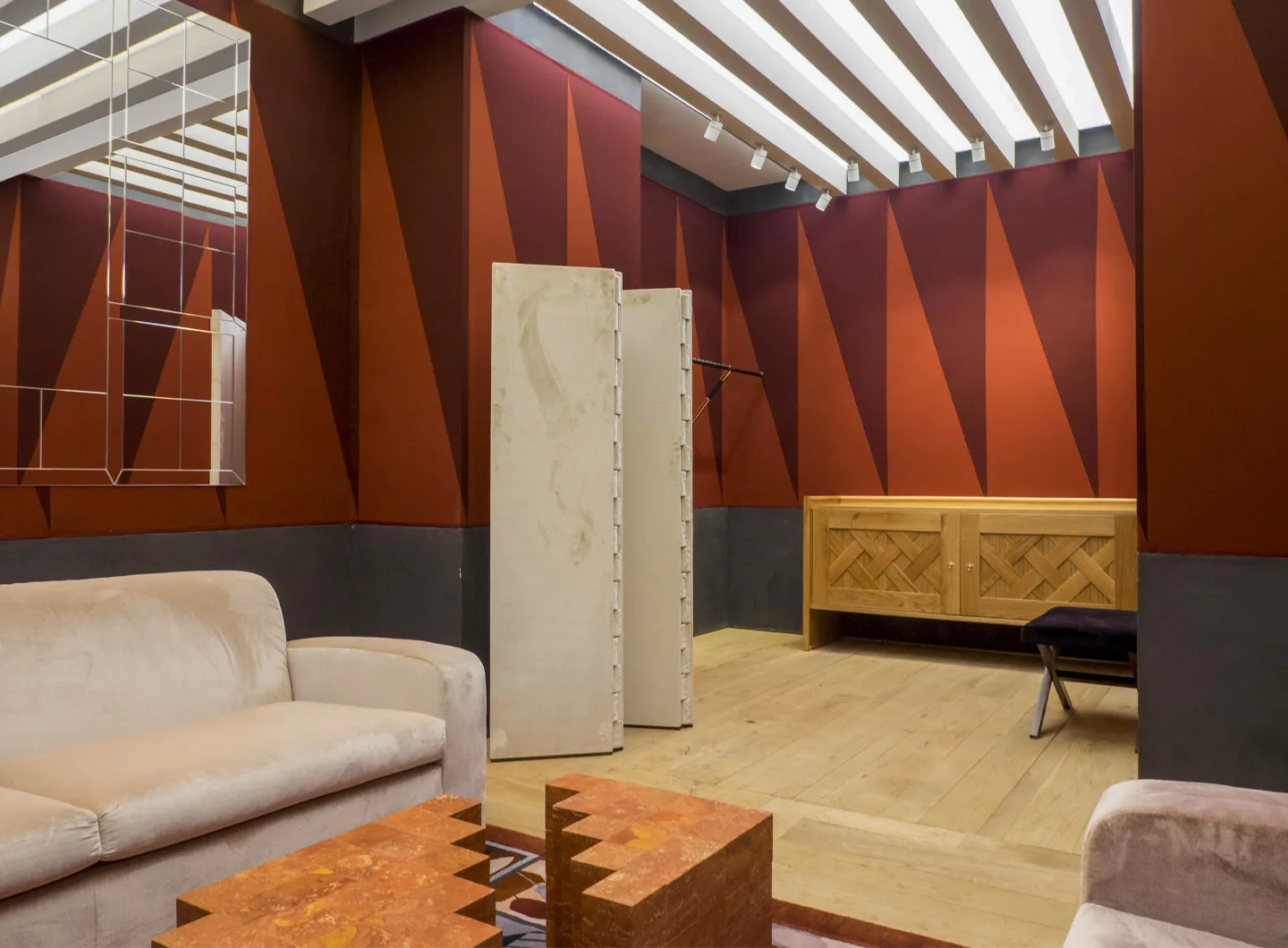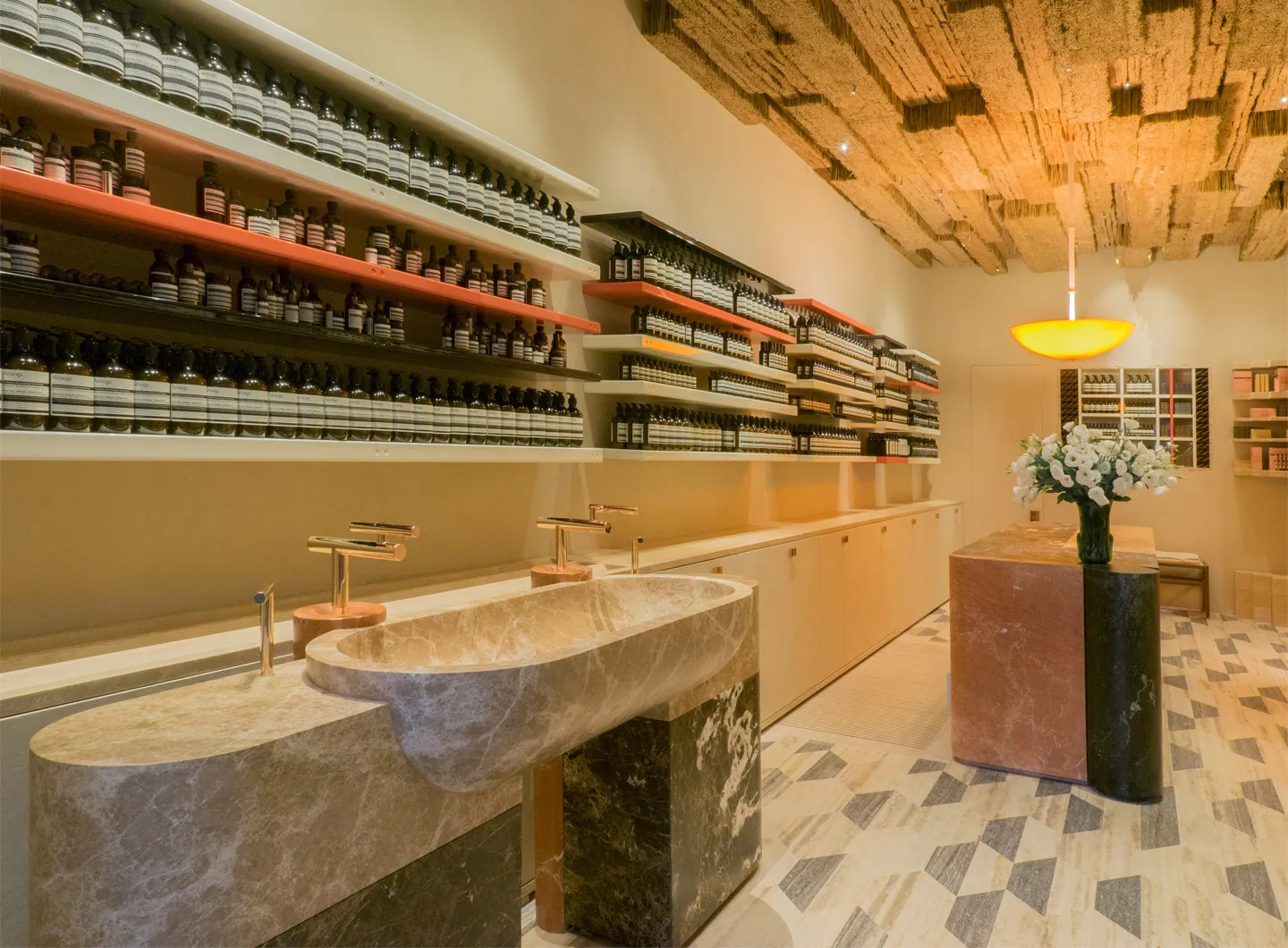In partnership with MiCodmc, a selection of establishments ripe for discovery during the 63rd edition of the Salone del Mobile.Milano, from 8th to 13th April
Luca Guadagnino talks to us about his passion for architecture

Studio Luca Guadagnino, "Call me by your Name" film set, 2017. Photo Giulio Ghirardi
After the lengthy applause for the Silver Lion won in Venice, Oscar-nominated director Luca Guadagnino tells us about his other, less well-known career as an interior designer, begun six years ago with the Studio that bears his name and a public debut at Milan’s Salone del Mobile
I entered the world of interior design and interior architecture quite late, but with my architect colleagues we developed a very personal idea. How space affects or is created around our behaviors. The value of space becomes the beginning of everything and from that principle there arises a sort of imperative of time. We don’t think just in terms of spaces based on a specific use, whether it’s a private client or a brand. But at the same time, there’s constant reflection on the way that a space will change through the course of the day and the seasons. We often ask ourselves: What will this space become in winter, or in summer? I like to think that our practice is very sensory, being based on the physical experience of being in that place during a given time.

Luca Guadagnino, photo Giulio Ghirardi
It rests on brightness. I believe space needs to be brightly lit, not artificially but by natural light. I always look for light and if I don't, if I go retreat, as happened a few years ago when I lived for a period in a very dark little house, it was more because I needed to lock myself up and engage in meditation, at times very austere, compared to my instinct that rather takes me towards large brightly lit spaces. This is added to another character trait of mine, namely comfort. Unfortunately I like to be comfortable.
It’s essential to talk to your client. It’s really important to listen to what a client knows or doesn’t know about himself or herself. In my opinion, in practice, the conversation has to be deep, discreet but also verge on the indiscreet.
Let's say that talking enables you to better understand the other person and to realize, in all that is said or left unsaid, whatever from a certain viewpoint that client really wants. The approach has been like this with practically all our clients. I’ll give you an example. We’ve worked with the Aesop brand, which included creating two stores we’re very proud of: one in Rome and the other in London.
In conversation, Dennis Paphitis, Aesop’s founder, sent us a small clip of Maria Callas being applauded in the foyer of the Teatro dell’Opera in Rome, but in London he sent us an image of London in the sixties. I raised this a notch by bringing the London counterculture of the late sixties and early seventies and all the homosexual liberation movements that came later in America to the table of the conversation with the architects. The two shops emerged from this line of thinking.

Studio Luca Guadagnino, Aesop store in London, 2019. Photo Giulio Ghirardi
Someone, after seeing the finished houses, asks “How do you know me so well?” And this brings us to a final point. Studio Luca Guadagnino does not aim to apply rigorously and let’s say even oppressively, some preordained idea of a place, a space, which holds good for any kind of client, like the work of some great architect or interior decorator. The important thing is always the story you tell, and this is the only bridge between me as filmmaker and as interior designer and architect.
In this specific case, the story is not so much the story as the person who inhabits the space. Everything changes to suit whatever the client wants.
The detail is life or, as they say, the devil is in the details, or both. And it’s wonderful to see in the meantime how you can control a detail, how many things can emerge from that detail, and besides how many details arrive unconsciously.
The people I work with are clearly very precious. They have incredible wisdom and a training in aesthetics and thinking about design. All the young architects I’ve met over the years have contributed not simply material things but ideas. Then I believe that aesthetics has to be guided by experience. Certain things you love should be forgotten, and then perhaps when you come across them they should be reviewed in a different key. The important thing is always to cultivate a very strong capacity for dialectic and listening and being open to a form of fusion of ideas.

In memoriam: David Lynch
The American director has left us at the age of 78. The Salone del Mobile.Milano had the honor of working with him during its 62nd edition, hosting his immersive installation titled “A Thinking Room”. An extraordinary journey into the depths of the mind and feelings. His vision will continue to be a source of inspiration.



 Stories
Stories













